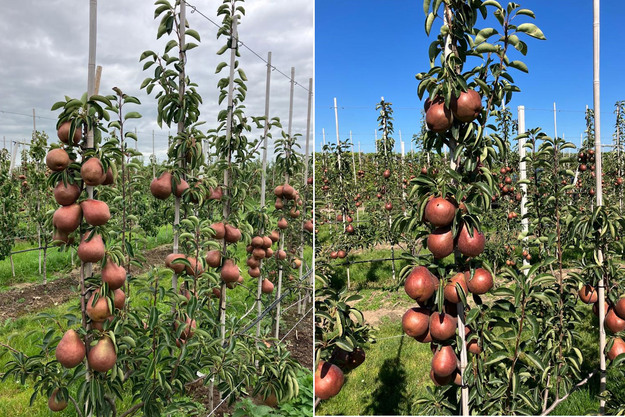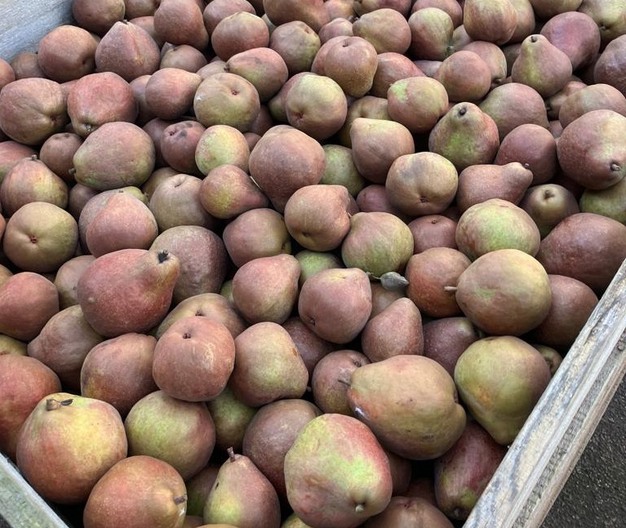"People shop with their eyes," declares Kees Oskam of Handelsmaatschappij Jan Oskam. This Dutch company focuses on exporting, among other products, top fruit, where there is an increasing interest in red pears. "The apple shelf has yellow, green, and red apples. With pears, there's never been that much choice, but a range with different colors presents a nicer picture and certainly boosts sales. The market for red pears is growing."

That is why Kees planted 10,000 Alessia pear trees last year. These red pears, discovered in a German experimental orchard, are a Red Williams/Doyenné du Comice hybrid. "The fertility of one parent and the super flavor of the other offers a combination that makes the Alessia very robust," he says. Another plus Kees sees is that, unlike other red pears, the Alessia retains its color throughout the growing season.
Leap of faith
The trader is convinced of the Alessia pear's potential and, so, along with several other growers, has taken a leap of faith by investing in new plantings. "Knowing the sector's margins, those are steps you want to take. But at 10,000 trees of €8 each, you must think carefully." Kees adds that these trees are slightly pricier because the license fees are factored into that price. Thus, unlike club varieties, there is no annual remittance.
That also means there is no market regulation, which, according to Oskam, is no problem. He sees plenty of sales potential. "The red pear market is growing, so that's allowed. Especially also because the other red pears on the market seem to have disappointing color fastness," he explains. Kees sold his first modest harvest in Germany, where the pear is already more widely known. If harvest volumes increase, he sees opportunities in the Netherlands, too. There is also interest from the United Kingdom, Poland, Spain, and Italy.
Chance
According to Kees, the disappearance of a large part of Italian pear production offers new opportunities for Dutch and Belgian growers. They can grow - and, for some time, have been growing - pears for that market. Kees doubts Italian pear production will regain the leading position it once held in Europe but does not rule it out.

For now, Dutch red Alessia pears are being sold to large German supermarket suppliers and have been in those stores since this month. Kees says there is much interest in this more exclusive pear, especially around the holidays. His first harvest, averaging six kilograms per tree in the first year after planting as a three-year-old cutting tree, was above expectations, and he is well pleased with the pricing. "It's presently covering costs nicely," he concludes.
Kees Oskam
J an Oskam BV
an Oskam BV
+31 (0)6 53371003
[email protected]
www.janoskam.nl
